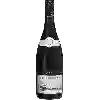
Winery Cuvée Anne ChristianVouvray Val De Loire
This wine generally goes well with
Details and technical informations about Winery Cuvée Anne Christian's Vouvray Val De Loire.
Discover the grape variety: Muscat de Roussé
Intraspecific cross between Hamburg Muscat and Cardinal, obtained in 1973 at the Roussé viticultural station (Bulgaria).
Informations about the Winery Cuvée Anne Christian
The Winery Cuvée Anne Christian is one of of the world's greatest estates. It offers 1 wines for sale in the of Touraine to come and discover on site or to buy online.
The wine region of Touraine
The wine region of Touraine is located in the region of Centre Loire of Loire Valley of France. Wineries and vineyards like the Domaine Famille Bougrier or the Domaine Joel Delaunay produce mainly wines white, red and sparkling. The most planted grape varieties in the region of Touraine are Cabernet franc, Gamay noir and Chenin blanc, they are then used in wines in blends or as a single variety. On the nose of Touraine often reveals types of flavors of grapefruit, tar or kiwi and sometimes also flavors of lime zest, lychee or asparagus.
The wine region of Loire Valley
The Loire Valley is a key wine region in western France. It follows the course of the Loire River on its Long journey through the heart of France, from the inland hills of the Auvergne to the plains of the French Atlantic coast near Nantes (Muscadet country). Important in terms of quantity and quality, the region produces large quantities (about 4 million h/l each year) of everyday wines, as well as some of France's greatest wines. Diversity is another of the region's major assets; the styles of wine produced here range from the light, tangy Muscadet to the Sweet, honeyed Bonnezeaux, the Sparkling whites of Vouvray and the juicy, Tannic reds of Chinon and Saumur.
The word of the wine: Spicy
Said of a wine whose taste and aromas are reminiscent of spices.







